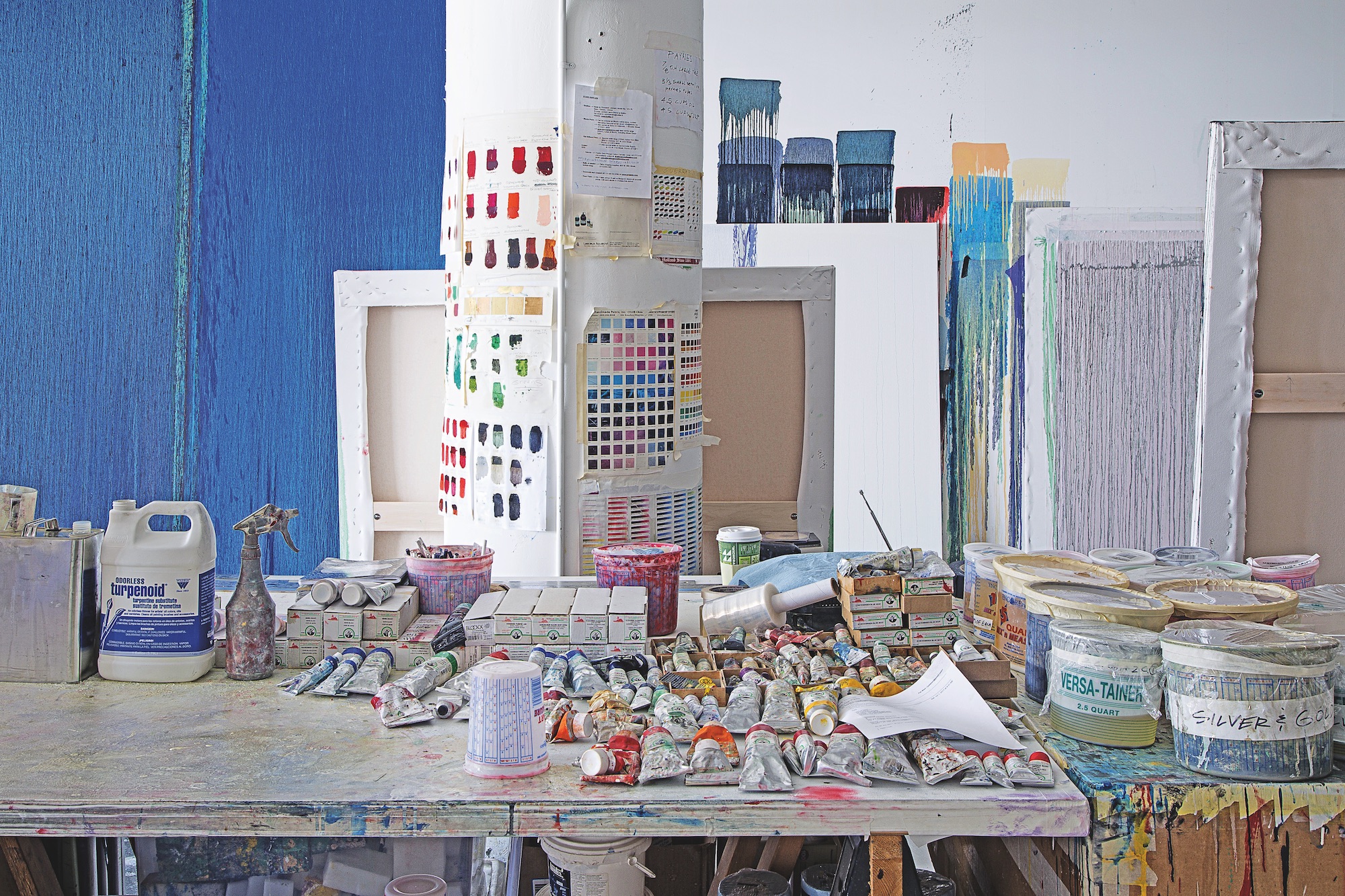
Artist Pat Steir compares beautiful artwork to an antidote to our cruel times. “There are two kinds of art. That which reflects what is—like Goya, for example—and that which takes everything in reality apart and changes how things are experienced forever—like Duchamp, Rauschenberg and John Cage.” Steir has now been making work in the latter vein for over five decades. In the Waterfall paintings for which she’s best known, evocative lines of paint drip down a canvas of built up color—a result of both gravity and precise, controlled brushstrokes across the top.
This September and October, Lévy Gorvy Gallery on Manhattan’s Upper East Side will mount an exhibition of new work by Steir. Called “Kairos” (a propitious moment for decision or action), the show will include five large scale and eight smaller- scale paintings. These canvases incorporate techniques she’s used for decades, since arriving at her signature process in the 1980s—splashing, pouring and dripping paint.

Born in 1940, Steir mounted her first solo exhibition at New York’s Terry Dintenfass Gallery in 1964 (Atlanta’s High Museum of Art included her in a group show the year before) and has enjoyed ebbs and flows in popular recognition ever since. She cites her first real moment of acknowledgment as a group show at the University of Rhode Island’s Fine Arts Center with Joan Snyder and Mary Heilmann in 1972. Of that group, according to Steir, only Heilmann was still in the spotlight by the end of the decade.
Gender was part of the problem. White male artists were more familiar and marketable. Not one to sit around and complain, Steir helped found the feminist journal and collective Heresies with other artists including Snyder and Amy Sillman. This year marks the 40th anniversary of the group’s first publication. A former art director for Harper & Row Publishing Company (which became HarperCollins), Steir was instrumental in designing the magazine. Her activism extended beyond the art world as well—she recalls protesting and marching to promote abortion rights, gay rights and civil rights.
Though Steir can still paint, she’s not fit for marching as she nears her 80th birthday. Nevertheless, she’s ardent about contemporary politics and angry about our current administration. “We should all go out on the street this very minute,” she says. “We should all do what they did in India, take off our clothes and walk, we should start in New York and end up in Los Angeles.” As in her painting, her vision for protest is beautiful, carefully choreographed movement.



